Blockchain Community Engagement: 7 Powerful Success Strategies 2025
Why Blockchain Community Engagement Is Reshaping Digital Relationships
Blockchain community engagement represents a fundamental shift from traditional online communities to ownership-driven ecosystems where members have real stakes in the platforms they help build.
Quick Answer for Blockchain Community Engagement:
– Shared Ownership: Token holders become stakeholders, not just users
– Transparent Governance: On-chain voting and decision-making processes
– Economic Incentives: Monetary and non-monetary rewards for participation
– Global Reach: 24/7 communities spanning multiple platforms and time zones
– Immutable Trust: Blockchain records create transparent, tamper-proof interactions
Research shows that approximately 90% of successful blockchain projects have active communities that contribute significantly to their growth. Unlike Web2 platforms where users generate value for corporate shareholders, blockchain communities flip this model. Members earn tokens for contributions, vote on platform changes, and directly benefit from the ecosystem’s growth.
Successful blockchain communities aren’t just about technology – they’re about creating sustainable loops of trust, participation, and value creation that traditional platforms cannot replicate.
As Samir ElKamouny AV, I’ve helped scale countless businesses by understanding that execution trumps ideas every time – and nowhere is this truer than in blockchain community engagement where technical innovation must meet genuine human connection.
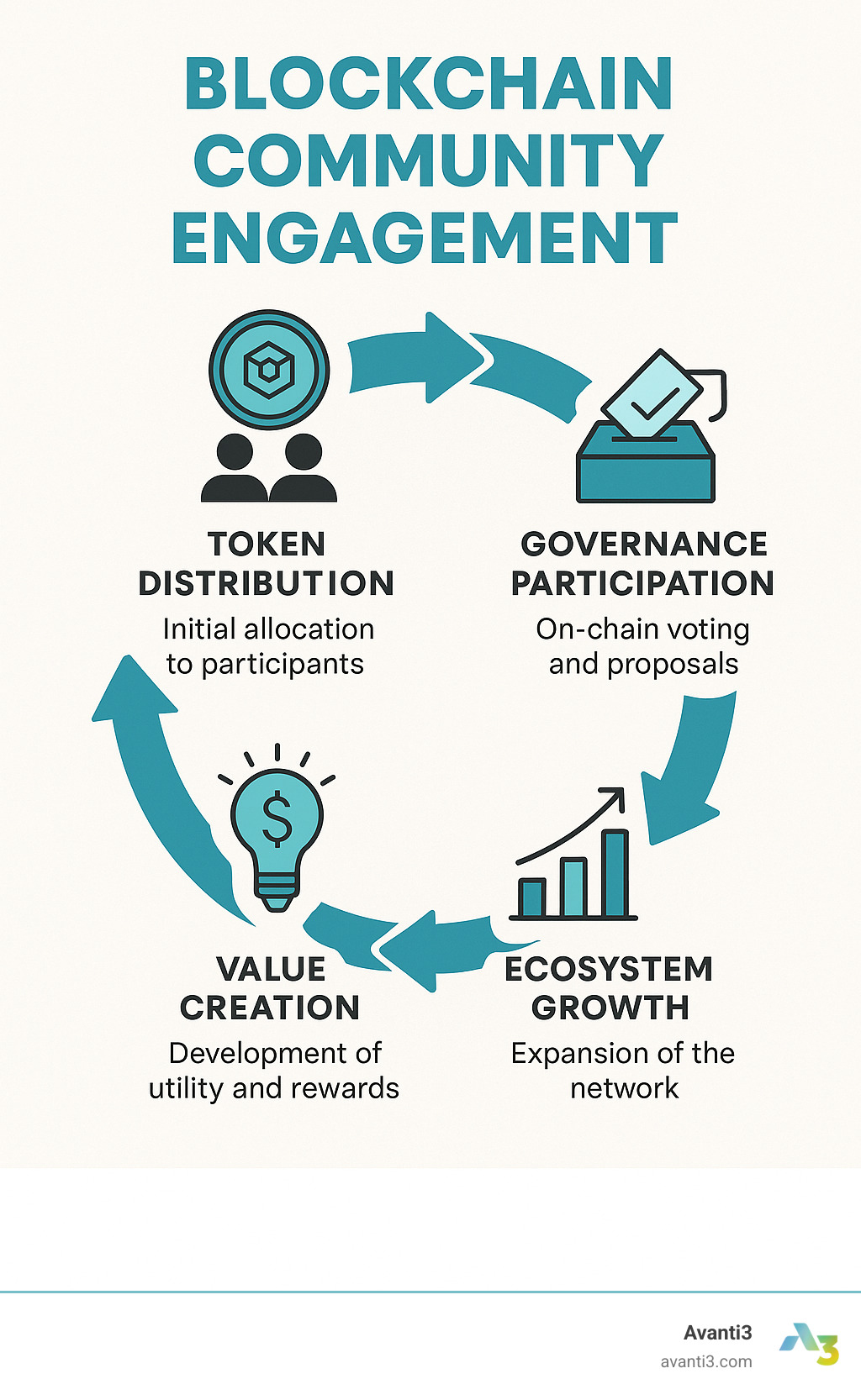
Blockchain community engagement terms simplified:
– blockchain integration services
– community engagement platforms
– fintech integration services
The Op-Ed Lens
Most blockchain projects build communities backward – starting with tokenomics before establishing genuine human connections. We’ve seen sophisticated DAOs with empty Discord servers and elaborate reward systems with no one to reward.
The sustainable path requires building authentic relationships first, then layering blockchain infrastructure to improve those connections. This creates social impact through technology that serves human needs rather than forcing humans to serve technological constraints.
Why Blockchain Community Engagement Matters
Think about posting in a Facebook group or sharing content on Instagram. You created value, but who got paid? Not you. This disconnect between value creation and capture is exactly what blockchain community engagement solves.
Research analyzing over 84 million transactions shows community-related activities jumped from 12% in 2016 to 28% in 2019. Approximately 90% of successful blockchain projects have thriving communities – this isn’t correlation, it’s the result of aligning everyone’s interests through shared ownership.
Definition of blockchain community engagement
Blockchain community engagement transforms online interactions. Instead of just liking and commenting, members become stakeholders who vote on decisions, earn tokens for contributions, and directly impact their wallet through participation.
The magic happens through participatory governance – your voice becomes part of on-chain voting that actually changes how projects operate. Value exchange flows both ways: contribute quality content, earn tokens; help moderate, get governance rights; provide expertise, receive NFT badges with special privileges.
Transparency changes everything. Every reward distribution and governance decision gets recorded permanently on the blockchain – no hidden algorithms or backroom deals.
Blockchain community engagement vs Web2 communities
The ownership shift represents the biggest difference. In Web2, you’re a tenant in someone else’s digital building. Blockchain communities make you a co-owner where your contributions increase the value of tokens you hold.
Immutable records create unprecedented trust. Every governance vote and reward distribution gets permanently recorded, unlike platforms that change algorithms overnight without user input.
Censorship resistance provides genuine security. While traditional platforms can delete content or ban accounts instantly, blockchain communities persist as long as the underlying network exists.
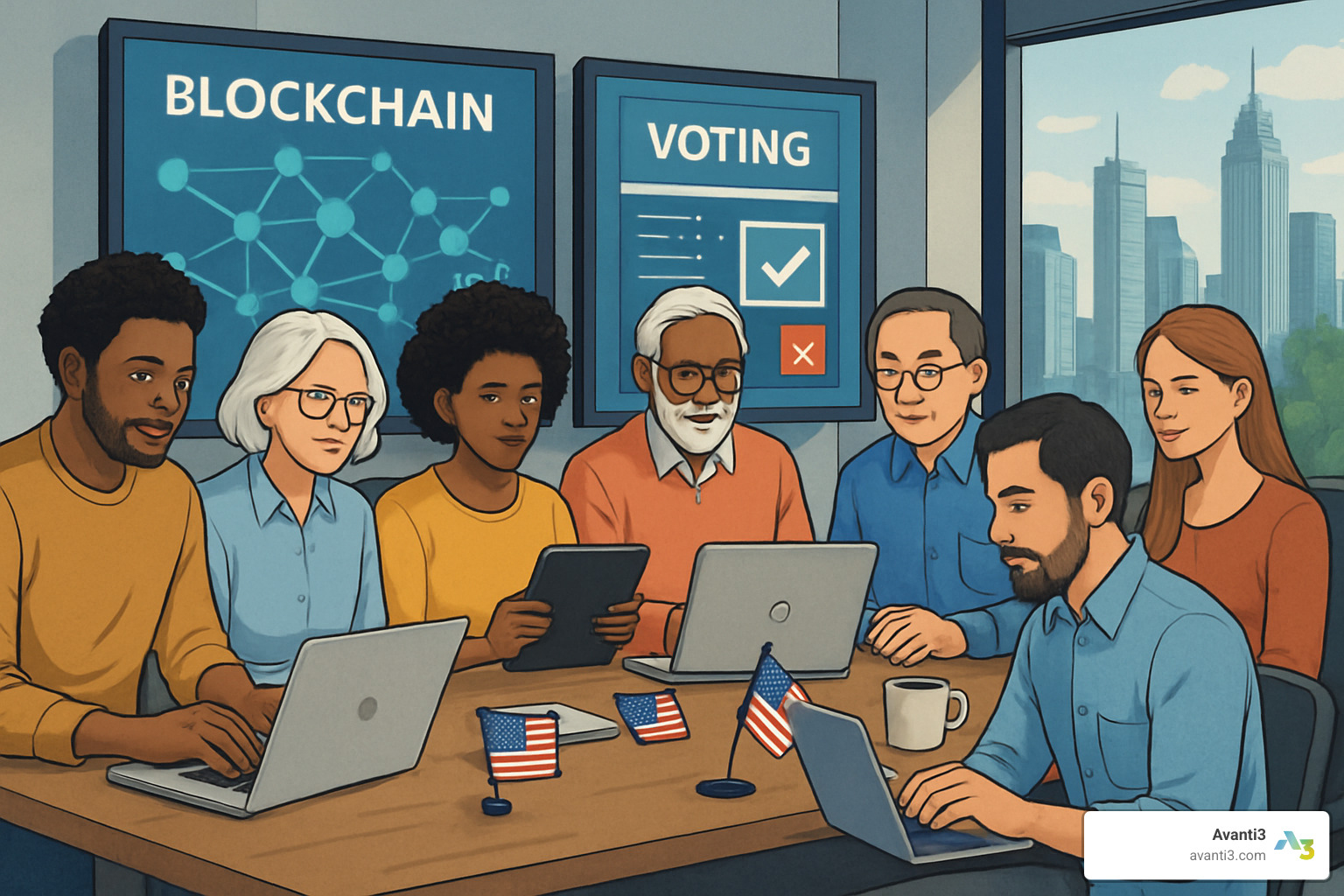
Anatomy of Web3 Communities: Types, Platforms & Incentives
Blockchain community engagement thrives through diverse community types working together like neighborhoods in a digital city.
Developer hubs form the technical heart, gathering around code repositories for protocol improvements. Ethereum’s developer community exemplifies this through GitHub coordination and regular core developer calls. Members receive grants, tokens, or job opportunities for contributions.
Investor circles bring together financial strategists sharing research and coordinating strategies. Advocacy groups educate and work with policymakers, earning recognition through NFT badges and governance tokens. Project-specific DAOs combine governance, treasury management, and strategy – Uniswap’s DAO distributed over $1 billion in governance tokens to members.
Telegram dominates crypto communications with robust security and 200,000-member group support. Its bot ecosystem enables automated moderation and real-time trading signals.
Discord excels for structured governance – 32 of 38 largest DAOs use Discord for its channel organization and role permissions that separate casual chat from serious governance.
Twitter (X) serves as the amplification engine with 586 million users, spreading breaking news and coordinating rapid community responses.
Web3 social platforms like Warpcast and Phaver offer true content ownership and direct rewards, showing higher engagement rates because everyone has skin in the game.
For businesses building blockchain communities, our Web3 Community Management services provide essential expertise.
Tool Stack for Vibrant Communities
Layer3 and Galxe revolutionized community motivation through gamified quest systems. Communities create quests around trading, governance participation, or content sharing. Users complete tasks for experience points converting to tokens or exclusive benefits. Some communities report 300-400% increases in target behaviors.
Guild platforms enable sophisticated token-gating mechanisms, creating aspirational pathways where increased participation opens additional benefits. Basic holders access general discussions while larger holders gain exclusive alpha signals or founder conversations.
Analytics platforms track on-chain behavior and governance participation, helping community managers optimize strategies and prevent issues before they escalate.
Incentive Design & Token Economics
Purely financial incentives can crowd out intrinsic motivation, making thoughtful design crucial.
Monetary rewards through token distribution remain most direct, but success lies in rewarding quality over quantity. NFT rewards provide unique recognition for achievements. Non-monetary incentives like social recognition and exclusive access often prove more sustainable.
Status systems tap into achievement desires through advancement from “Contributor” to “Ambassador” based on engagement levels. The most successful communities combine monetary rewards with social recognition and genuine impact opportunities.
Explore our Community Loyalty Programs for implementation strategies.
Governance & Tokenomics: Driving Participation and Decision-Making
Blockchain community engagement reaches full potential when members become true stakeholders with real decision-making power. DAOs (Decentralized Autonomous Organizations) encode governance rules into smart contracts, creating transparent systems where community decisions execute automatically.
On-chain voting permanently records every decision on the blockchain, eliminating manipulation concerns. However, gas fees can make voting expensive and wealthy token holders might dominate decisions.
Quadratic funding addresses the “rich get richer” problem by exponentially increasing the cost of additional votes, preventing wealthy actors from buying outcomes while strengthening passionate community voices.
Staking rewards create skin in the game by requiring token holders to lock assets for governance participation, aligning long-term interests with voting behavior.
Treasury management represents where governance theory meets reality. Communities must allocate resources across development, marketing, and operations through transparent frameworks that build trust.
Dual-token models separate governance rights from daily utility, allowing each token to optimize for its specific purpose.
Research from The Role of Steemit as a Blockchain-Based Platform analyzing 84 million transactions shows blockchain discussions grew from 12% to 28% of activity as reward mechanisms matured.
Designing Inclusive Governance
Most blockchain governance suffers from terrible participation rates – often fewer than 10% of token holders vote on crucial decisions.
Delegate models allow token holders to assign voting power to engaged community members, dramatically increasing effective participation. Snapshot voting removes cost barriers by conducting votes off-chain while maintaining verification. Off-chain deliberation through Discord and forums provides essential foundation for informed decisions.
| Voting Mechanism | Participation Cost | Transparency | Accessibility | Best Use Case |
|---|---|---|---|---|
| On-chain | High (gas fees) | Maximum | Low | Critical protocol changes |
| Snapshot | Low | High | High | Regular governance decisions |
| Delegated | Variable | High | Medium | Complex technical proposals |
| Quadratic | Medium | High | Medium | Resource allocation decisions |
Token Design Pitfalls
The inflation versus deflation debate reflects sustainability questions. Inflationary tokens provide ongoing participation rewards but risk devaluing holdings. Deflationary tokens preserve early adopter value but may reduce new member incentives.
Crowding-in motivation versus crowding-out effects represent subtle challenges. Poorly implemented monetary rewards can reduce intrinsic motivation, causing communities to collapse when rewards end.
Successful communities design tokens that amplify rather than replace intrinsic motivations like social recognition and genuine purpose.
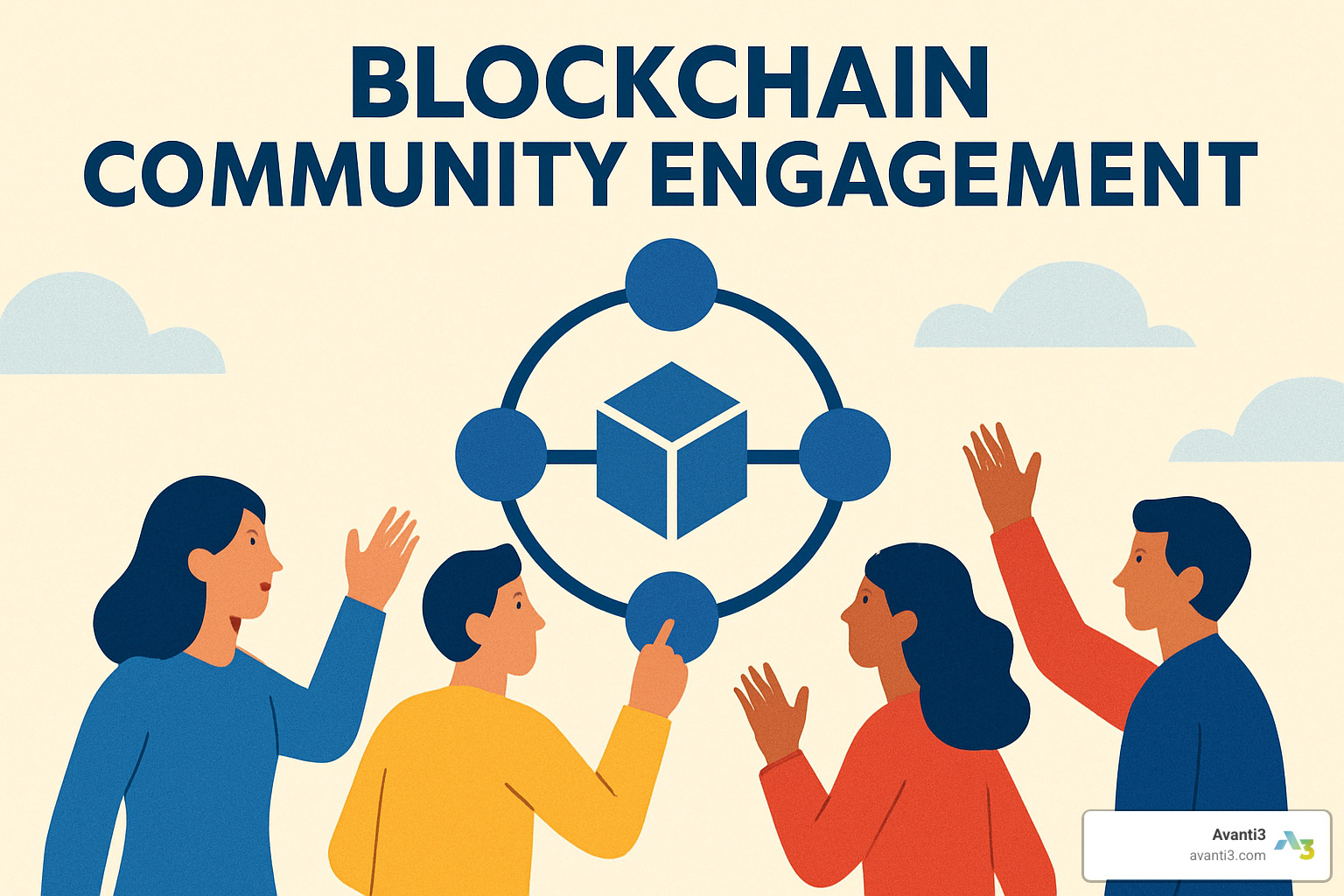
Challenges & Ethical Considerations
Blockchain community engagement faces significant challenges requiring careful attention for healthy, sustainable communities.
Scams and misinformation pose existential threats. The pseudonymous nature creates opportunities for bad actors to exploit trust. Communities with strong moderation and verification processes experience significantly lower fraud rates.
Community fragmentation across multiple platforms, chains, and protocols can dilute engagement. Successful projects maintain multi-platform presence while designating primary hubs for critical communications.
Accessibility barriers from technical complexity, high fees, and specialized knowledge requirements prevent participation. Communities investing in education and user-friendly interfaces achieve broader membership.
Contributor burnout affects passionate members due to always-on global communities and complex governance responsibilities. Sustainable communities implement rotation systems and recognize burnout signs early.
Legal ambiguity surrounding tokens and governance creates ongoing uncertainty, limiting activities and creating compliance burdens.
For comprehensive solutions, explore our Digital Engagement Platforms addressing security, accessibility, and sustainability.
Balancing Decentralization with Effective Management
The tension between decentralization ideals and practical management needs represents a complex challenge. Pure decentralization can cause decision paralysis while excessive centralization undermines blockchain community value.
Clear role definition helps maintain effectiveness while preserving decentralized principles. Successful communities establish transparent hierarchies based on contribution and expertise rather than token holdings alone.
Multi-signature safeguards protect treasuries while distributing control among trusted members representing different constituencies. Conflict resolution mechanisms become crucial as communities grow, requiring established processes for disputes.
Progressive decentralization allows gradual control transfer from founding teams to community members as ecosystems mature, requiring careful planning and clear milestones to maintain trust.
Future Trends in Blockchain Community Engagement
The blockchain community engagement landscape is evolving rapidly with innovations that seemed like science fiction becoming everyday tools.
AI-powered moderation changes the game for community managers, understanding context, detecting manipulation, and predicting tensions. Research shows 44% of marketers adopted AI for content production in 2023, rapidly extending into community management.
Cross-chain identity systems solve reputation fragmentation – your Ethereum DAO contributions will carry over to Solana communities. Soul-bound reputation tokens create genuine meritocracies where influence comes from contributions rather than deep pockets, as these credentials can’t be transferred or sold.
Real-world asset integration bridges digital engagement with tangible benefits like co-working spaces, exclusive events, and physical products based on digital participation.
Regenerative finance mechanisms reward measurable positive impact activities like carbon sequestration, education, or social good alongside traditional engagement metrics.
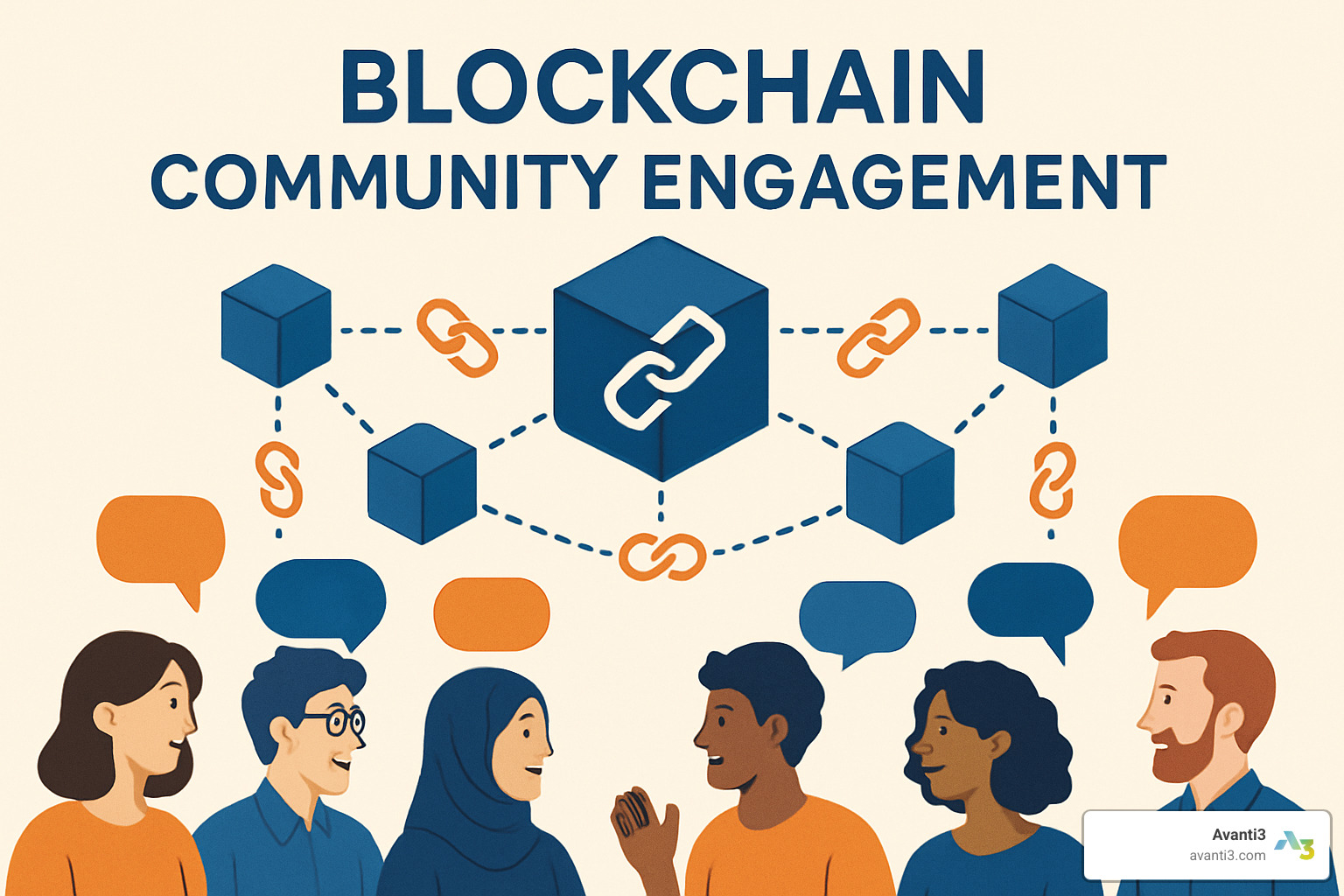
Evolution of blockchain community engagement tooling
Composable protocols let communities mix and match features like building blocks – governance from one protocol, rewards from another, social features from a third. This democratizes advanced tools like WordPress democratized websites.
Low-code and no-code solutions remove technical barriers with drag-and-drop interfaces for token-gating, quest systems, and governance tools.
Verifiable credentials create portable reputation systems working across the entire blockchain ecosystem, building comprehensive Web3 professional profiles.
Interoperability protocols break down blockchain network walls, enabling seamless collaboration between Ethereum, Polygon, Solana, and other communities through cross-chain governance and shared rewards.
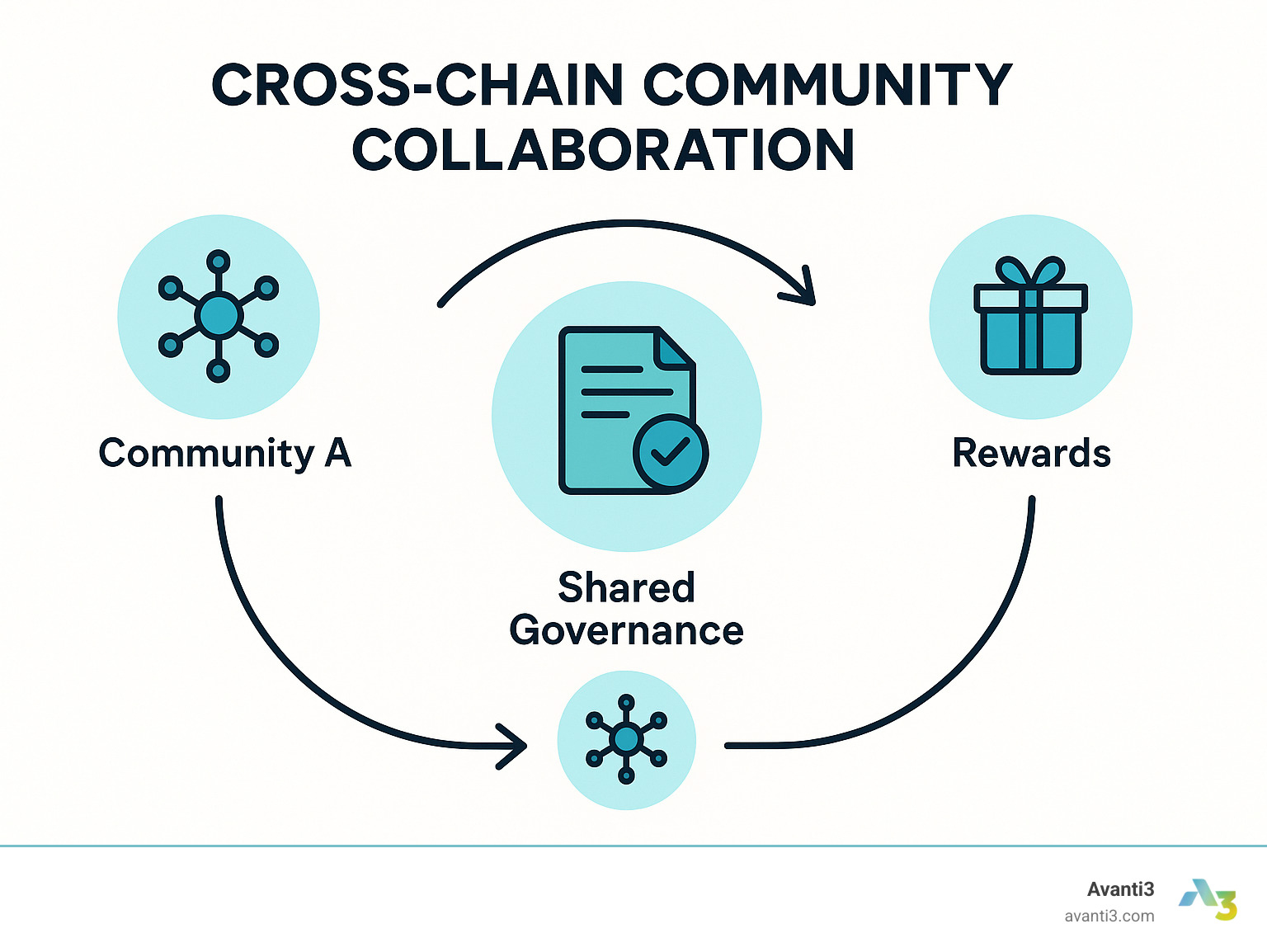
At Avanti3, we’re building tools that anticipate these changes, helping creators and brands prepare for the next evolution of digital community building.
Frequently Asked Questions about Blockchain Community Engagement
How do token incentives motivate long-term engagement?
Token incentives work by tapping into ownership psychology – we’re more invested in things we own. Community members become stakeholders with real skin in the game through immediate rewards paired with long-term value.
Smart communities reward meaningful contributions like thoughtful governance votes and educational content rather than any activity. Vesting schedules distribute rewards over time, separating committed members from quick-profit seekers.
The real power combines financial and social rewards – token holders earn money, gain influence, access exclusive channels, and earn peer recognition, creating a “double motivation effect.”
What platforms are best for early-stage blockchain communities?
Successful projects build multi-platform ecosystems where each tool serves specific purposes rather than picking just one platform.
Telegram dominates initial community building with 950 million crypto-native users and bot automation for everything from welcome messages to trading alerts, scaling to 200,000 members.
Discord excels for organized communities needing structure through topic-based channels and role permissions – 32 of 38 largest DAOs use Discord for governance discussions.
Twitter/X provides amplification with 586 million users for reaching new members beyond existing circles.
Winning strategy: Start with Telegram for daily conversations, maintain Twitter presence for growth, graduate to Discord for sophisticated governance.
How can communities avoid governance deadlock?
Governance deadlock kills blockchain communities through endless debates without decisions. Quorum requirements solve participation problems but need careful calibration – smart communities use dynamic quorums adjusting based on historical participation.
Delegation mechanisms increase participation without requiring every token holder to become governance experts. Time-bounded voting prevents analysis paralysis with clear deadlines.
Design different governance tracks for different decisions – routine choices need simple majorities, constitutional changes require supermajorities, emergencies bypass normal processes. Default outcomes trigger when governance fails, creating urgency and preventing endless indecision loops.
Conclusion
Blockchain community engagement isn’t just about technology – it’s about reimagining what’s possible when people have real ownership in digital spaces they help create. 90% of successful blockchain projects have thriving communities that actively contribute to growth because aligned interests create powerful results.
At Avanti3, we’ve seen this change firsthand. Our integration of Web3 technologies like NFTs, blockchain infrastructure, AR/VR experiences, and AI-powered tools creates engagement platforms where both creators and communities win through shared success.
The future belongs to communities that balance decentralization with organization – decentralized enough for real member power, organized enough to execute effectively. Innovative enough to push boundaries, sustainable enough to last.
Challenges like scams, fragmentation, and accessibility barriers are real, but solutions emerge through AI-powered moderation, cross-chain identity systems, and soul-bound reputation tokens. The tools exist today to build something extraordinary.
Blockchain provides infrastructure for trust, but communities provide the soul. Transparency, ownership rights, and global coordination only matter when serving genuine human needs for connection, purpose, and shared achievement.
We’re creating new models for digital human collaboration where contribution gets rewarded, voices get heard, and success gets shared. The building blocks of trust aren’t just code – they’re relationships, shared values, and belief in collective achievement.
Ready to join this change? Our comprehensive tools for building a community combine cutting-edge blockchain technology with proven principles of human connection, because the future isn’t just about what technology can do – it’s about what communities can achieve when technology serves their deepest needs.







